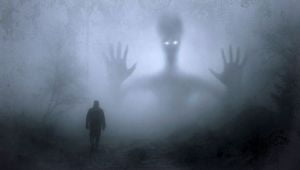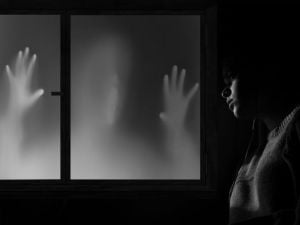Abstract – In this article, David Furlong, PhD, the Director of the Spirit Release Forum and the author of several books, shares his discoveries from more than twenty years of practice and research into spirit release therapy, which includes healing inner trauma. He highlights the importance of the transpersonal dimension within his therapeutic approach, based on more than ten thousand hours of clinical practice, and highlights the complexities and entanglements in dealing with cases involving past lives and malign entity attachments. He shows how spirit intrusions can sometimes infect sub-personalities and the methodologies for clearing and balancing their energetic state. These methodologies involve simple regression techniques, supported by a direct connection to the Transpersonal Self, which is conceived as a distinct ontological aspect of consciousness with a non-local overview of the prevailing inner world state supported by insight into how this can be healed.
Introduction
This article explores methods for healing traumatised sub-personalities (Rowan, 1990) or parts (Schwartz & Sweezy, 2020) and releasing intrusive spirits attached to, or within, the psyche (Baldwin, 2003). It is based upon the author’s thirty years of working practice in the specialist therapeutic field of spirit releasement. This journey has involved a continuing process of refinement of methodological approach in dealing with a wide range of complex cases. The methodology entails using regression techniques to access the psyche, combined with invoking the Transpersonal Self (TS), to become actively involved in healing the inner world.
Transpersonal psychologists and regression therapists are familiar with the concept of The Self, suggesting a core life-giving element of our being (Jung, 1993). It is suggested here that this existential part of our being comprises a yin/yang polarity, part of which is anchored in the body, which can be considered the Core Self (CS) and part of the transpersonal dimension of consciousness; the TS. In this context, the client’s TS is perceived as a distinct ontological aspect of consciousness that has a non-local overview of the prevailing inner world problems and insight into how they can be healed. Furthermore, it can identify intrusive elements that include spirits and entity attachments within the psyche.
This article highlights the methods for accessing the inner world and communicating with the Transpersonal Self. Additionally, it shows different ways to release the burdens of traumatised sub-personalities and identify intrusive spirits and how they can be released.
The Induction Process
The different methods for accessing the inner world are familiar to all hypnotherapists. For my part, I have not found a need to induce a deep trance nor to rely on ideo-motor signalling within this therapeutic process. With a bit of encouragement, most clients can enter an altered state of consciousness to be able to connect to the different elements of their being. I use a simple body-conscious relaxation technique as the first part of the induction process. Of course, there are exceptions, and these cases need extra time, patience, and experimentation on what works best for them.
The next part of the induction involves a connection to two distinct ontological transcendent elements of the being. They involve the Core Self (CS), which is central to Schwartz’s Internal Family Systems Therapy (Schwartz, 1995), which might be perceived as the part of our greater consciousness or Spirit that is anchored in the body. The CS can be equated with our immortal Soul (Powell, 2017; Tomlinson, 2012). Reference to this element of our being, known to the Ancient Egyptians as the Ba, symbolised by a bird, can be traced back historically more than four and a half thousand years to the Pyramid Texts (Lurker, 1974). To the Ancient Greeks, it was the psyche referenced particularly in Plato’s Phaedo (Plato, 2015). The CS can be conceptualised as ideally anchored in the body’s centre close to the heart. Schwartz (1995), in his Internal Family Systems Therapy, maintains that this part holds eight primary qualities of compassion, creativity, connectedness, curiosity, courage, clarity, confidence and calmness
The second connection is to the Transpersonal Self (TS) or Higher Self, which is non-local and resides solely in the spiritual domain (Zinser, 2010). In his book Destiny of Souls, Newton (2000) suggests that we only incarnate a percentage (25% to 50%) of our Soul into the body, the rest remaining in the spiritual domain. Blavatsky (1889) called this part the Higher-Self or Atman, and citing A. P. Sinnett, stated:
The Spiritual realm would all the while be the proper habitat of the Soul, which would never entirely quit it; and that non-materialisable portion of the Soul which abides permanently on the spiritual plane may fitly, perhaps, be spoken of as the HIGHER SELF (Blavatsky, 1889, pp. 173-174).
The Ancient Egyptians also acknowledged this part calling it the Ka (Lurker, 1974). Zinser (2010) suggests the Higher-Self is the part of our being that has the overview of all elements within the psyche and can best determine the course of action within any treatment. Before reading Zinser, I had reached a similar conclusion and worked with the Higher-Self for a dozen years before reading his book.
As in Transpersonal Psychotherapy, the term transpersonal has been used to denote a spiritual aspect of consciousness beyond what we usually regard as the persona (British Psychological Society, 2022). However, in this context, I am using the term Transpersonal Self (TS) as synonymous with the Higher-Self, implying an aspect of our being anchored on the spiritual planes and external to the body. In this context, the CS and the TS might be regarded as twin polarities, one body centred and the other in the spiritual dimension. On death, and after a complete transition to the spiritual realm, these two parts are reunited. The induction I use acknowledges these twin components of our being and actively invites them to participate in the therapeutic process.
Following Induction
Once the client has entered an Altered State of Consciousness (ASC), I make an audible request to the TS to bring into awareness the part now needed to help bring the client into balance. At this point, the therapy can go off in different directions. One that often emerges is for the client to visualise themselves in a beautiful place in nature, such as a beach by the sea, and connect to their physical senses through that imaginal work. Once fully immersed, I request the TS to bring into awareness that part of the psyche that needs healing by inviting that part or sub-personality to step out into the light.
Let us assume that a six-year-old child steps out who has suffered some trauma. In his Internal Family Systems Therapy, Schwartz (Schwartz & Sweezy, 2020) provides evidence that parts of our being hold burdens of past traumas. The parts are created to protect the Self from being overwhelmed in the child’s development. These parts are frozen in time and need to be helped to release their burdens, which might be experienced cathartically in the healing process. The critical element here is to help the child part connect to its inner light or CS and from there to its TS. Once the part has made these connections, it will often release its emotional burden through the adult self. This unburdening can be helped by breathing out the emotion. However, sometimes this is not enough.
Deeper Issues and Problems
If the connection of the child part to its TS is not sufficient to bring the child into a balanced healthy state, I then request its TS to scan through all elements of its being and bring out into awareness any other part that is blocking the healing process. Another part, often another separate entity, will step out of the part into the light at this stage.
In some cases, this could be a benign lost earthbound soul, which needs a little help to move fully back into the light by transitioning into the spiritual realm. Helping it connect to its inner light (CS) and then invoking its TS will facilitate this process. However, particularly in abuse situations, what steps out might be a dark or malign entity. I then hold that entity in a net of light before working to release it.
Dark and Malign Entities
Dark beings generally come in two forms. The first are those human souls that have become ensnared, like Dr Faustus (Marlowe, 2019), by demonic beings and are then compelled to infect and disrupt the life of another individual by attaching to, or entering within, some part of the developing psyche (Modi, 1997). Child abuse is one gateway that offers this  opportunity. Once inside, the malign entity will do what it can to distort that person’s life. It will often sit beneath the radar, feeding off induced fear, anger, and hatred.
opportunity. Once inside, the malign entity will do what it can to distort that person’s life. It will often sit beneath the radar, feeding off induced fear, anger, and hatred.
The second form is those demonic or dark force entities (DFEs) that have never had a human life (Baldwin, 2003). Through intuitive guidance, I believe that DFEs originally came from the angelic realms but chose to step off the paths of light when their master or Arch Devil rejected the creative evolutionary flow of the universe, which is based on love, light, and forgiveness. In some senses, they might be equated with the Orcs in Tolkien’s Ring fantasy. Mythology has given different names to the primary Devil character, such as Ahriman (Zoroastrian), Set (Ancient Egyptian), Lucifer (Judeo-Christian) and Loki (Scandinavian), which I highlight in my book Illuminating the Shadow (Furlong, 2016).
Methods of Release for Dark Entities
Dealing with dark entities is more complex than a lost soul spirit release. Malign beings will put up a lot of resistance to being cleared. In some cases, as in the tale of Dr Faustus, a contract or tacit agreement has been made. For example, a dark being might turn up when a child part is in extreme distress and tell the part that it has come to help. In its distress, the part often agrees, providing the gateway into the inner world.
These contracts or agreements stemming from the current life, or a previous incarnation, need to be cancelled (Zinser, 2010). Fortunately, the TS is aware of such agreements, and a request for help will bring them into awareness.
When dealing with a dark human soul, they invariably need another level of clearing by invoking their TS to draw out any DFE that keeps them trapped. In these cases, I always invoke the help of higher beings of light, such as the Archangel Michael and his entourage, to restrain and deal with these entities.
DFEs need to be sent to a place where they can be both restrained and helped, and, above all, no longer infect other human souls. Once cleared of their dark entanglement, human souls can be released back into the light. However, their TS will not usually allow this without all dark influences being cleared. If they do not easily go, further checks might be needed to ensure all dark influences and devices have been removed from them.
Past-Life Issues
In some cases, following the initial induction, a past-life part or fragment will step out of the individual into the light. When returning to a new life, earthbound souls, or dissociated soul-fragments, can be attracted back to the psyche. It is as though the resonance of the being sends out a signal that allows these elements to find their way home. This attraction is why some of our clients’ parts may not stem from this current incarnation. The general release process is to send back into the spiritual realm, past-life parts, and help balance, unburden and re-integrate parts from the current life. However, the TS sometimes determines that deeply traumatised parts from the current life need to be returned to the light. Conversely, past-life parts occasionally need to be integrated into the current incarnation. Always check with the TS on what is required.
Occasionally, earthbound past-life parts are discovered trapped in the dark realm. Often an event in the current life has called them forth, and when they attach to an individual, they can be complicated to release. Effectively, they are another part of the greater Self and have a similar spiritual resonance. Once identified, they need to be connected to their TS. Their TS can then be requested to bring any part that keeps them stuck into the light.
 For example, in one case, a ruthless male Judge from a past century stepped out of a female client. He was full of anger, hatred, and aggression. A request to his TS, on what was keeping him trapped in his anger, produced a nine-year-old boy part, who had been brutalised by his father.
For example, in one case, a ruthless male Judge from a past century stepped out of a female client. He was full of anger, hatred, and aggression. A request to his TS, on what was keeping him trapped in his anger, produced a nine-year-old boy part, who had been brutalised by his father.
The boy had become infected by several dark entities, which needed to be first cleared before the boy could be released into the spiritual realm. Following this release, the Judge needed further clearing and, when open to a connection to his TS, was able to request forgiveness from those he had unfairly punished. Eventually, he too was released back to the spiritual realm, and from the client’s perspective, then ceased to be an issue.
As can be seen from this example, many levels of complexity need to be addressed before we can release some earthbound souls. Fortunately, the TS knows what is needed and by continual reference with this transcendent aspect of our being, the appropriate steps can be followed.
Discussion
What is presented here is a brief glimpse of my thirty years of work in spirit releasement. In the beginning, there was no manual describing the processes that needed to be followed. It has been a trial-and-error approach in which my clients, for the most part, have been my greatest teachers. The insights of others, such as Zinser (2010), on how the TS will never over-ride the free-will element of a sub-personality or part, have also been instructive. These parts cannot be forced to change through coercion, only by love, forgiveness, and willing agreement.
This field is still in its infancy, and other discoveries must be made before a comprehensive approach can be formalised. It would seem that the transpersonal dimension is as complex as the physical world in which we also reside.
Conclusion
Fundamental to the healing of our inner world is recognising its component elements. The evidence suggests that in addition to our primary ego-self, our inner world is peopled by sub-personality parts, each with its own unique conscious identity. Each part has a fragment of the Soul within it that gives it life, free will and the opportunity to change. Our CS is central to our physicality, which is the body’s life-force energy. Above that, and residing solely in a spiritual dimension, is the TS, which has an overview of the psyche and knows the intended plan of any life. Therefore, when working with the inner world, both the CS and the TS are essential elements and must be engaged in the therapeutic process.
References
Baldwin, W. (2003). Healing lost souls: Releasing unwanted spirits from your energy body. USA: Hampton Roads Publishing.
Blavatsky, H. (1889). The Key to Theosophy. UK: The Theosophical Publishing Company
British Psychological Society. (2022). Transpersonal psychology section. The British Psychological Society online. Accessed March 2022 at https://www.bps.org.uk/member-microsites/transpersonal-psychology-section
Furlong, D. (1995). The healer within. UK: Piatkus Publishing.
Furlong, D. (1997). Healing your family patterns. UK: Piatkus Publishing.
Furlong, D. (2003). Working with earth energies. UK: Piatkus Publishing.
Furlong, D. (2016). Illuminating the shadow: Transmuting the dark side of the psyche. UK: Matador.

